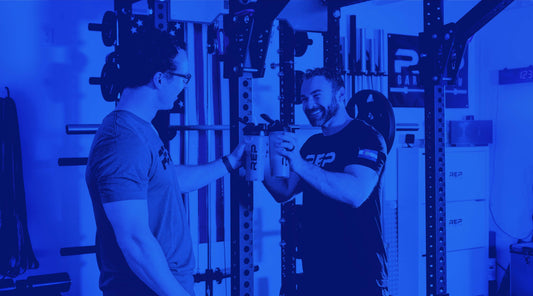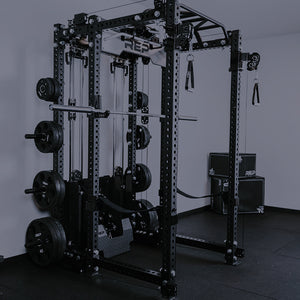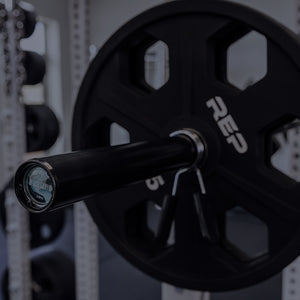
You’ve got knurling and chalk as wingmen. And grip strength exercises to set you up for success. But when you’re really pushing yourself (or more like pulling), sometimes you need a little extra help.
Your grip is never going to be as strong as your back or other larger muscles. And in that, grip can often be the limiting factor for really pushing your lifts to the max.
That’s where lifting straps come in.
What Are Lifting Straps?

Don’t confuse straps with wraps. Wrist straps are secured around the wrist joint to support it, typically during heavy presses (think of powerlifters maxing out on bench).
Straps also wrap around your wrists, but they have excess material that is intended to also wrap around the equipment – sort of loosely tying your hands to the bar or handle. This allows you to not solely rely on your grip; your wrists can bear some of the weight, too.
Who Uses Lifting Straps?

You may see bodybuilders using gym straps for heavier lifts, and you can also see Strongman competitors training with them, because you can use straps in Strongman meets. However, you can’t use straps in powerlifting meets, so it’s not the best idea for competitive powerlifters to train with them. You want the training stimulus to be as similar to the comp as possible.
New lifters and people not lifting heavy probably don’t need lifting straps, although they may be useful in certain situations (like if you have grip problems). But whenever possible, it’s best not to rely on lifting straps; you want to develop your grip strength, because it’s useful for so many different exercises and it can be a good indicator of your central nervous system fatigue. This goes for newbies, as well as the warm-up and lighter sets for experienced lifters.
What Exercises Can Benefit from Lifting Straps?

You aren’t going to need straps for lighter, high-volume, faster exercises. But they can be your friend for heavy deadlifts, rows, lat pulldowns, weighted pull-ups, shrugs, rack pulls, farmer’s carries, Romanian deadlifts, and other exercises you find limited by your grip strength.
Lifting straps aren’t useful for push-style exercises like bench press or like tricep pushdowns on a cable machine. Use straps to help your wee hands defeat the mighty pull of gravity.
How Do I Pick Lifting Straps?

There are various types of lifting straps. You can find straps made from heavy-duty cotton, nylon, or leather (these tend to have a little more give/bend). You can find padded straps; ones with different hooks/loops; and straps of different lengths. Shorter straps tend to have less support because they wrap around the barbell fewer times, but they’re also quicker to release.
Looking for the Best Lifting Straps?
REP's Lifting Straps are tough – made from strong cotton for max grip support – but they’re comfortable to wear, with neoprene padding against the wrists. The straps are small, lightweight (weighing just 0.09lbs per strap), and easy to just throw in your gym bag, taking up minimal space. They come in three colors: black, red, or white. All straps come with a white REP logo on the black pad.

REP also makes special Olympic Lifting Straps. These are 10" long (shorter than standard straps) and sewn into a single closed loop. This loop and short length makes the Olympic Lifting Straps ideal for quick-release movements like snatches and clean and jerks.
How to Use Wrist Straps?
Wondering how to use standard lifting straps? It's easy.
Put the ends of the straps through the loops to make a circle.

Slide them onto your wrists and tighten them.
Wrap the ends of the straps around the bar or handle until the strap is completely wrapped around the bar. If this is tricky, try wrapping your non-dominant hand first, using your other hand to guide the strap into place. It may take a little adjusting to figure out how to wrap the second hand without assistance, but a little practice goes a long way.

Put your hands on top of the straps and hold the straps that are wrapped around the bar or handle to hold them in place.

You may want to rotate/roll the barbell/dumbbell to tighten the straps. You want the straps tight on your wrists.
Pull away! 
Aimee Heckel, CPT, is a health and fitness journalist with over 20 years of experience. She set an all-time world-record deadlift in her division across all powerlifting federations at Mr. Olympia. In addition, she earned a national deadlift record and 18 Colorado state records. Heckel also has nine world records in grip sport, a pro card in natural figure bodybuilding, four first-place bodybuilding titles, and was named IPE Ms. Colorado Figure.

NEWSLETTER SIGNUP
Product launch information, promotions, blogs, and REP news.







